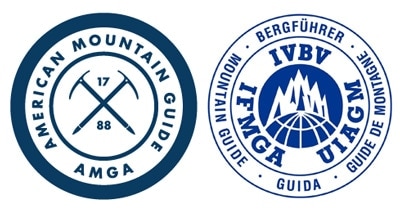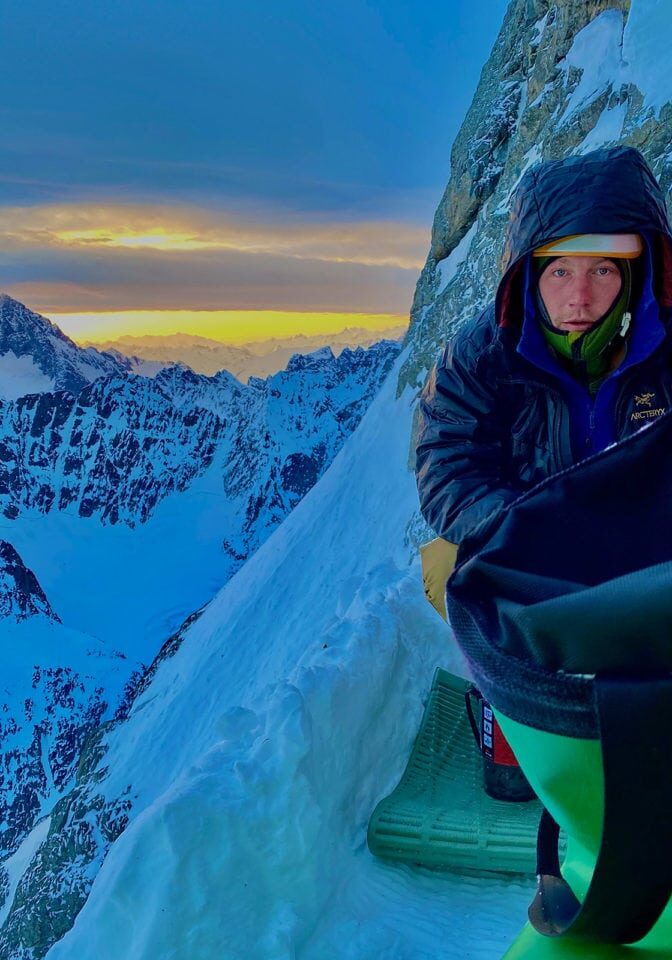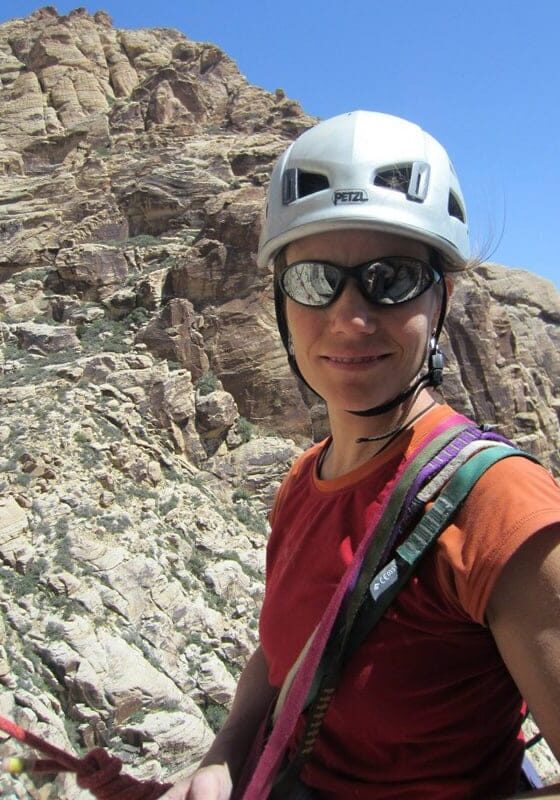Tuckerman Ravine Winter Climbing
Overview by AMGA/IFMGA Mountain Guide Mark Synnott.
Perhaps our single most popular winter offering is an ascent of Mt. Washington via Tuckerman Ravine. Instead of branching off onto the Lion's Head route at the Huntington Ravine Fire Trail, you stay on the Tucks trail up to Hermit Lake. The deck outside the caretaker's cabin (aka Howard Johnsons - or Ho Jo's) is a great place to take a break and to marvel at the unobstructed view into Tuckermans. Believe it or not, the Ho Jo’s information desk sells candy bars and other items, so stash a dollar or two in an inside pocket. From here the Tuckerman Ravine trail is picked up right behind Ho Jos. Follow it and you should be in the base of the ravine in 20-30 minutes.
Be sure to check the avalanche conditions board before heading up the trail. It is highly advisable, since the ravine represents true avalanche terrain, for climbers to carry beacons, probes and shovels, and to know how to use them. In mid winter the rating is often moderate and above. Keep in mind that several avalanches and fatalities have occurred when the gullies were posted at moderate. The definition of moderate is: "natural avalanches unlikely, human triggered avalanches possible." Often, the ravine can have a variety of ratings, with left gully rated moderate and right gully rated Low.
There are several different routes for climbing the ravine, the most popular are Lobster Claw and Right Gully, which are both located to the right of the infamous “Lip”, which also happens to be the south, sunny side of the ravine. Normally there is a deep and well set bootpack up both Right Gully and Lobster Claw, with the latter being slightly more straight forward. At the top of both gullies you’ll have to do a short bushwhack to get onto the Lion’s Head trail.
Take a left if you are going to summit, right if you want to skip the top and descend Lion’s Head. It is recommended that you take a close look around the area where the gully joins the Lion’s Head trail, because if you want to go down the same way, it can be tricky to find the exact spot where the gullies top out. If you do choose to descend the way you came up, be careful, as quite a few people have lost their footing and slipped coming down these gullies. This will result in a nasty tumble and injuires are common. Down climbing is a lot more difficult than going up, and, of course, you are going to be more tired than you were on the way up. Glissading is not recommended as the gullies are too steep and there are many rocks to hit at the bottom if you get out of control. In other words, if you don’t have good french technique and solid self arrest skills, it’s best to follow Lion’s Head for your descent.
We find that even first time snow climbers can handle these gullies with crampons and an ice axe, and the rope is rarely employed. As guides, we do carry a 30-foot strand of cord in case someone needs a short rope for any of the sections. If you are looking for an even more adventurous approach to the summit, you could tackle the Lip, or even pick out a line straight up the center of the headwall. Even in a big snow year, there will be several large ice bulges on the headwall, and, of course, these can be climbed if you have the screws, ropes, etc. Tackling the center headwall is an amazing three pitch climb which will lead you up and over the dead center of Tuckerman’s Ravine. Above the rim you follow long easy angles slopes up to a junction with the Davis Path/Boot Spur Trail. Left gully is also a long and high quality snow climb where the snow is typically drier on account of it’s shady exposure. It should also be noted that there is a lot of ice climbing in Tuckerman Ravine, especially early season before the bowl has been filled with snow. There is a big grade III flow up and left of Left Gully which offers a nice pitch of moderate ice in an amazing setting. Then there’s the headwall, which has infinite possibilities. And to the right of the headwall there is a steeper grade IV near the Sluice.
Want to Climb in Tuckerman Ravine?
Check out our options whether you want to ascend a snow gully or tackle some early season ice...




















